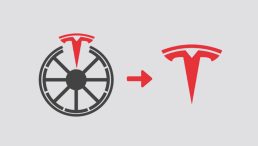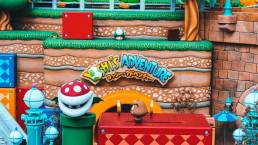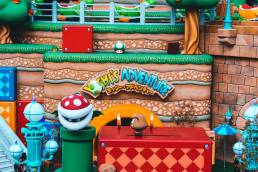How Tesla Transforms Technical Innovation
into Compelling Stories That Drive Market Leadership.
1. The Evolution of Tesla’s Strategic Intent
When most people think about Tesla, they picture sleek electric vehicles and Elon Musk’s charismatic presentations. But beneath the surface lies one of the most sophisticated strategic narratives in business history. Tesla’s story isn’t just about selling cars – it’s about selling the future itself.
Tesla’s strategic intent has always been broader than traditional automakers. While companies like Ford and GM focus on automotive excellence, Tesla positioned itself as a solution to humanity’s greatest challenges. This isn’t just marketing – it’s a fundamental reimagining of what a company can be.
“Tesla’s mission is to accelerate the world’s transition to sustainable energy,” Musk often states. But what makes this mission statement powerful isn’t its words – it’s how Tesla weaves it into every aspect of their operation.
What’s particularly fascinating is how this narrative has evolved. In the early days, Tesla faced significant skepticism. Electric cars were seen as slow, impractical, and uninspiring. Rather than directly combating these perceptions, Tesla simply rewrote the rules of the game. They didn’t try to convince people that electric cars could be as good as gasoline vehicles – they set out to prove they could be better in every way.
2. Tesla’s Initial Three-Pronged Strategy
In Tesla’s early days, they employed what I call the “Triple-S Strategy”:
- Start with the superficial (luxury sports cars)
- Scale to the substantial (mass-market vehicles)
- Shift to the systematic (energy ecosystem)
This wasn’t just a business plan – it was a narrative journey. Each step built credibility for the next, creating what storytellers call “narrative momentum.” The Roadster proved electric cars could be exciting, the Model S proved they could be luxurious, and the Model 3 proved they could be accessible.
Let’s break down each phase in detail:
The Superficial Phase
The decision to start with a sports car wasn’t just about market positioning – it was about narrative positioning. The Roadster challenged the fundamental story about electric vehicles. It wasn’t just fast “for an electric car” – it was fast, period. This created a crucial shift in the conversation from “Why electric?” to “Why not electric?”
The Substantial Phase
The Model S represented a crucial narrative pivot. It wasn’t enough to show that electric cars could be exciting – Tesla needed to prove they could be practical and desirable for everyday use. The Model S didn’t just compete with other electric vehicles; it competed with (and often beat) luxury vehicles from established brands like Mercedes and BMW.
The Systematic Phase
This is where Tesla’s narrative truly separates from traditional automotive stories. By expanding into energy storage, solar power, and charging infrastructure, Tesla transformed its story from “building better cars” to “reimagining energy use.” This expansion wasn’t just about new products – it was about validating their larger vision.
3. The Art of Strategic Silence
One of Tesla’s most fascinating narrative techniques is what I term “strategic silence.” Unlike traditional automakers who flood channels with advertisements, Tesla creates narrative gaps that customers eagerly fill themselves. They’ve mastered the art of letting their community tell their story.
This approach has saved Tesla billions in advertising costs while creating something more valuable: authenticity. When customers tell Tesla’s story, it carries more weight than any corporate message could.
The power of strategic silence manifests in several ways:
Community-Driven Storytelling
Tesla owners become natural brand ambassadors, sharing their experiences through social media, blogs, and word-of-mouth. These stories are more diverse, authentic, and convincing than any planned marketing campaign.
The Power of Mystery
Tesla often leaves details of upcoming products partially unclear, creating speculation and discussion. This isn’t accident – it’s strategic narrative engagement. The gaps in information create spaces for community engagement and imagination.
Selective Communication
When Tesla does communicate directly, it’s usually through significant announcements or Musk’s social media presence. This creates a rhythm of silence and revelation that keeps audience engagement high.
4. Key Strategic Issues in Tesla’s Narrative Evolution
Tesla faces a unique challenge: maintaining revolutionary credibility while scaling into a mainstream manufacturer. Their narrative must balance multiple tensions:
- Disruption vs. Reliability
- Innovation vs. Consistency
- Vision vs. Execution
They navigate these tensions through what I call “narrative layering” – different stories for different audiences that never contradict each other but emphasize different aspects of the company’s identity.
The Disruption-Reliability Balance
For early adopters, Tesla emphasizes its revolutionary aspects. For mainstream customers, they focus on reliability and practicality. The genius is how these narratives support rather than contradict each other.
Innovation Through Iteration
Tesla’s approach to innovation is itself a story. Rather than waiting for perfection, they release and improve continuously. This creates a narrative of constant progress while managing expectations about initial releases.
Vision Execution Framework
Tesla’s bigger visions are always anchored by concrete achievements. When Musk talks about colonizing Mars, it’s balanced by demonstrable success in automotive and energy innovation.
5. The Vision-Product Loop
Tesla’s most powerful narrative innovation is their “vision-product loop.” Every product launch isn’t just about features – it’s about advancing humanity’s story. The Cybertruck isn’t just a vehicle; it’s a statement about reimagining possibilities. Solar roofs aren’t just about energy; they’re about reshaping our relationship with consumption.
This creates a powerful feedback loop:
- The vision makes products more meaningful
- Products make the vision more credible
- Credibility enables bigger visions
- Bigger visions inspire better products
Case Study: The Cybertruck Narrative
The Cybertruck perfectly exemplifies this loop. Its radical design isn’t just about aesthetics – it’s about challenging assumptions about what’s possible. The controversy around its design served the narrative by demonstrating Tesla’s willingness to completely reimagine established products.
The Role of Setbacks
Interestingly, even setbacks feed into this loop. When the Cybertruck’s “armor glass” demonstration didn’t go as planned, it became part of the story – showing Tesla’s willingness to take risks and be transparent about failures.

More than a badge – Tesla’s sleek ‘T’ represents a cross-section of an electric motor, paying homage to both Tesla’s revolutionary technology and its namesake, Nikola Tesla. It’s a masterclass in meaningful design: simple enough to be instantly recognizable, yet loaded with purpose and storytelling.
Source: logoai.com
6. Presentation as Strategic Tool
Tesla’s presentation strategy deserves special attention. Musk’s presentations break many traditional rules but follow a deeper narrative logic:
- Technical details serve emotional purposes
- Flaws humanize the narrative
- Ambitious targets create tension
- Live demos add stakes
These aren’t just product launches – they’re narrative events that advance Tesla’s larger story.
The Anti-Corporate Presentation Style
Musk’s sometimes awkward presentation style works because it contrasts with polished corporate presentations. It supports Tesla’s narrative of authenticity and focus on substance over style.
Technical Detail as Story Element
When Tesla presentations dive into technical details, it’s not just about specifications – it’s about building credibility for their larger vision. Each technical achievement becomes evidence that their bigger goals are achievable.
The Power of Live Demonstrations
Tesla’s willingness to do live demonstrations, despite the risks, reinforces their narrative of transparency and confidence. Even when things go wrong, it serves the larger story of innovation and authenticity.
7. The Multi-Layer Narrative Architecture
Tesla’s narrative operates on three distinct layers:
- Humanity Layer: Addressing climate change, ensuring species survival
- Industry Layer: Disrupting multiple sectors, pushing innovation
- Product Layer: Delivering superior performance and design
This architecture allows Tesla to maintain narrative coherence while speaking to different audiences and concerns.
The Humanity Layer
This top layer connects Tesla’s activities to fundamental human challenges:
- Environmental sustainability
- Species-level resilience
- Technological progress
- Human potential
The Industry Layer
The middle layer focuses on how Tesla is transforming multiple industries:
- Automotive manufacturing
- Energy production and storage
- Transportation infrastructure
- Artificial intelligence
The Product Layer
The foundation layer demonstrates how individual products deliver on higher promises:
- Performance specifications
- Design innovations
- User experience
- Technical capabilities
8. Future Narrative Directions
Tesla’s strategic narrative continues to evolve. As they expand into AI, robotics, and new markets, their story must grow while maintaining its core themes. The challenge isn’t just telling a bigger story – it’s telling a story that makes their expanding ambitions feel natural and inevitable.
Emerging Narrative Threads
Several new elements are being woven into Tesla’s story:
- Artificial Intelligence and Autonomy
- Humanoid Robotics
- Neural Interfaces
- Sustainable Energy at Scale
Narrative Integration Challenges
As Tesla’s scope expands, they face several storytelling challenges:
- Maintaining narrative coherence across diverse products
- Balancing ambitious visions with practical progress
- Keeping the story accessible while adding complexity
- Managing increasing scrutiny and competition
9. Lessons for Strategic Storytelling
Tesla’s approach offers valuable lessons for any organization crafting its narrative:
- Start with a transformative vision
- Create narrative layers that support each other
- Let your community participate in storytelling
- Use product launches as narrative milestones
- Maintain consistency across expanding ambitions
Practical Applications
Organizations can apply Tesla’s narrative strategies by:
- Identifying their unique contribution to human progress
- Creating clear connections between vision and products
- Building community engagement mechanisms
- Developing multi-layered communication strategies
- Using design to reinforce narrative elements
Common Pitfalls to Avoid
Learning from Tesla also means understanding what not to do:
- Don’t separate vision from execution
- Avoid generic mission statements
- Don’t underestimate the power of community
- Never sacrifice authenticity for polish
- Don’t fear controversy if it serves the larger narrative
10. The Role of Design in Tesla’s Narrative
Design isn’t just about aesthetics in Tesla’s world – it’s a crucial part of their strategic narrative. Every design choice, from the minimalist interiors to the distinctive user interfaces, reinforces their story of reimagining what’s possible.
Design as Narrative Element
Tesla’s design philosophy supports their narrative in several ways:
- Minimalism suggests focus and efficiency
- Distinctive features become talking points
- User interface design reflects vision of simplicity
- Product design challenges conventional wisdom
Visual Storytelling in Practice
Working with design firms like Zamora Design, companies can:
- Align visual elements with strategic narrative
- Create consistent design language
- Use design to differentiate and lead
- Make complex stories visually accessible
Conclusion
Tesla’s strategic narrative isn’t just a story – it’s a sophisticated system for turning technical innovation into cultural meaning. By weaving together vision, product strategy, and community engagement, they’ve created a narrative engine that drives their business forward.
As markets become more competitive and attention spans shorter, the ability to craft compelling strategic narratives becomes increasingly crucial. Tesla’s example shows how powerful it can be when done right.
The real genius of Tesla’s narrative strategy isn’t just in the story they tell – it’s in how they’ve created a framework that turns every achievement, product, and even setback into part of a larger, meaningful journey. For businesses looking to build their own strategic narratives, Tesla provides not just inspiration but a practical template for connecting product innovation with human aspiration.
*Note: This analysis draws from multiple sources including Tesla’s shareholder letters, academic studies of their communication strategy, and direct observation of their presentation techniques. While the framework and analysis are original, they build on the work of numerous business and communication scholars.
Contact me if you have any questions you’d like answered! And if you enjoyed this article, be sure to check out my analysis of the strategic narratives of Lego, Nike, Apple, Harley Davidson, Patagonia, AirBnB, and Netflix.
Related Posts
November 18, 2024
Crafting the Future: OpenAI’s Strategic Narrative
Explore OpenAI's strategic narrative and discover how storytelling shapes its…
November 18, 2024
Unpacking Shopify’s Strategic Narrative: Rewriting the Rules of eCommerce
Explore how Shopify transformed from a snowboard shop to a global commerce…
November 12, 2024
Canva’s Strategic Narrative: How Design Democratization Created a $40 Billion Empire
Discover how Canva's strategic narrative empowers creativity through…
November 12, 2024
Nintendo’s Strategic Narrative: A Masterclass in Storytelling
In the ever-evolving landscape of the gaming industry, Nintendo stands as a…
Related Posts
November 18, 2024
Crafting the Future: OpenAI’s Strategic Narrative
Explore OpenAI's strategic narrative and discover how storytelling shapes its…
November 18, 2024
Unpacking Shopify’s Strategic Narrative: Rewriting the Rules of eCommerce
Explore how Shopify transformed from a snowboard shop to a global commerce…
November 12, 2024
Canva’s Strategic Narrative: How Design Democratization Created a $40 Billion Empire
Discover how Canva's strategic narrative empowers creativity through…
November 12, 2024
Nintendo’s Strategic Narrative: A Masterclass in Storytelling
In the ever-evolving landscape of the gaming industry, Nintendo stands as a…







